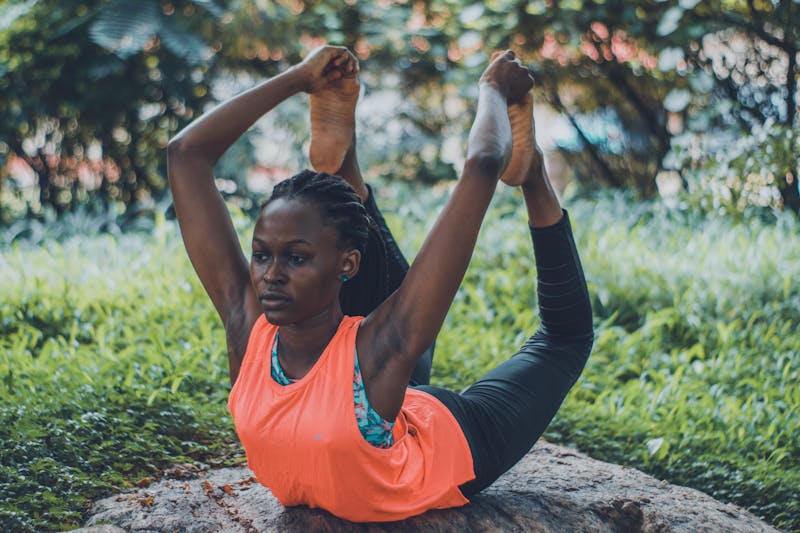In today’s fast-paced world, where sedentary lifestyles are becoming increasingly prevalent, prioritizing physical activity is more crucial than ever. Regular exercise offers a plethora of benefits, from improved physical health and mental well-being to increased energy levels and reduced risk of chronic diseases. But knowing why you should be more active is only half the battle. The real challenge lies in figuring out how to make it a consistent part of your life. This blog post will delve into the best ways to increase your physical activity, offering practical strategies, personalized approaches, and long-term sustainability tips to help you achieve your fitness goals.

Understanding the Importance of Physical Activity
Before we dive into the “how,” let’s briefly reiterate the “why.” Regular physical activity is linked to a reduced risk of:
- Cardiovascular Disease: Including heart disease, stroke, and high blood pressure.
- Type 2 Diabetes: By improving insulin sensitivity and glucose metabolism.
- Certain Cancers: Such as colon, breast, and endometrial cancer.
- Obesity: By burning calories and boosting metabolism.
- Depression and Anxiety: By releasing endorphins, which have mood-boosting effects.
- Osteoporosis: By strengthening bones and improving bone density.
- Arthritis: By maintaining joint flexibility and reducing pain.
- Sleep Disorders: By promoting better sleep quality.
Beyond these health benefits, increased physical activity can also lead to:
- Increased Energy Levels: Making you feel more vibrant and less fatigued.
- Improved Mood: Reducing stress and promoting a sense of well-being.
- Enhanced Cognitive Function: Boosting memory, focus, and concentration.
- Weight Management: Helping you lose, maintain, or prevent weight gain.
- Increased Self-Esteem: Boosting confidence and body image.
Finding Your Best Way: A Personalized Approach
There’s no one-size-fits-all answer to the “best” way to increase physical activity. What works for one person might not work for another. The key is to find activities you enjoy and that fit into your lifestyle. Here’s a breakdown of factors to consider:
- Your Current Fitness Level: Are you a complete beginner, or are you already somewhat active? Start slowly and gradually increase the intensity and duration of your workouts to avoid injury and burnout.
- Your Interests: Do you enjoy being outdoors? Do you prefer solo activities or group classes? Are you competitive or more focused on personal goals? Choosing activities you genuinely like will make it much easier to stick with them.
- Your Schedule: How much time can you realistically dedicate to exercise each week? Break it down into smaller, manageable chunks if needed. Even 10-minute bursts of activity can add up throughout the day.
- Your Resources: Do you have access to a gym? Are there parks or trails nearby? Consider your budget and what equipment or facilities are available to you.
- Your Goals: What are you hoping to achieve through increased physical activity? Weight loss? Improved strength? Stress reduction? Having clear goals will help you stay motivated.
Strategies for Increasing Physical Activity: A Comprehensive List
Here are a variety of strategies to incorporate more movement into your daily life:
1. Start Small and Gradual:
- The 10-Minute Rule: If you’re feeling overwhelmed, commit to just 10 minutes of activity. Often, once you get started, you’ll feel motivated to do more.
- Progressive Overload: Gradually increase the intensity, duration, or frequency of your workouts as your fitness level improves. This principle is essential for continued progress.
- Listen to Your Body: Don’t push yourself too hard, especially when starting. Rest and recovery are just as important as the workouts themselves.
2. Make it Fun and Engaging:
- Find Activities You Enjoy: Experiment with different types of exercise until you find something you genuinely like. This could be anything from dancing and swimming to hiking and rock climbing.
- Listen to Music or Podcasts: Pump up your workout with your favorite tunes or listen to an engaging podcast to distract yourself from the effort.
- Exercise with a Friend: Having a workout buddy can provide motivation and accountability.
- Join a Class or Group: Group fitness classes or sports leagues can add a social element to your workouts and make them more enjoyable.
- Set Challenges and Track Your Progress: Use a fitness tracker or app to monitor your activity levels and celebrate your achievements.
3. Integrate Activity into Your Daily Routine:
- Take the Stairs: Skip the elevator and opt for the stairs whenever possible.
- Walk or Bike Short Distances: Instead of driving, walk or bike for errands or commutes that are close by.
- Park Further Away: Park a little further from your destination to get in some extra steps.
- Stand Up More: If you have a desk job, try standing up for a few minutes every hour. Consider a standing desk.
- Get Active During Breaks: Use your lunch break to take a walk or do some stretching.
- Incorporate Activity into Social Events: Suggest going for a walk or bike ride with friends instead of just sitting around.
- Do Chores Actively: Put on some music and dance while you clean or do yard work.
4. Make it a Habit and Stay Consistent:
- Schedule Your Workouts: Treat your workouts like any other important appointment and schedule them into your calendar.
- Set Realistic Goals: Start with small, achievable goals and gradually work your way up to larger ones.
- Find a Routine: Establish a regular workout routine that fits into your lifestyle. Consistency is key.
- Don’t Give Up After a Setback: Everyone has days when they skip a workout. Just get back on track as soon as possible.
- Reward Yourself (Healthily): Celebrate your accomplishments with non-food rewards, such as a new workout outfit or a massage.
- Find Your “Why”: Connect with the deeper reasons why you want to be more active. This will help you stay motivated when things get tough.
5. Explore Different Types of Activity:
- Cardiovascular Exercise: Activities that elevate your heart rate, such as running, swimming, cycling, and dancing.
- Strength Training: Exercises that work your muscles, such as lifting weights, bodyweight exercises, and resistance band workouts.
- Flexibility Training: Activities that improve your range of motion, such as yoga and stretching.
- Balance Training: Exercises that improve your balance, such as tai chi and Pilates.
6. Seek Professional Guidance:
- Consult Your Doctor: Before starting any new exercise program, especially if you have any underlying health conditions.
- Hire a Personal Trainer: A certified personal trainer can create a personalized workout plan and provide guidance and motivation.
- Work with a Physical Therapist: A physical therapist can help you recover from injuries and improve your movement patterns.
Overcoming Common Barriers:
- Lack of Time: Break workouts into smaller chunks, integrate activity into your daily routine, and prioritize exercise as an important part of your day.
- Lack of Motivation: Find activities you enjoy, exercise with a friend, set realistic goals, and connect with your “why.”
- Fatigue: Start slowly, gradually increase intensity, and ensure you’re getting enough sleep.
- Injuries: Consult with a doctor or physical therapist, modify your workouts as needed, and prioritize rest and recovery.
- Cost: Explore free or low-cost options, such as walking, running, bodyweight exercises, and community fitness classes.
Conclusion: A Journey Towards a Healthier You
Increasing your physical activity is a journey, not a destination. It’s about making sustainable lifestyle changes that will benefit your health and well-being for years to come. By finding activities you enjoy, setting realistic goals, and staying consistent, you can unlock the numerous benefits of regular exercise and create a healthier, happier you. Remember, every step counts, and even small changes can make a big difference in the long run. Embrace the process, celebrate your progress, and enjoy the journey towards a more active and fulfilling life.





Leave a Reply
You must be logged in to post a comment.